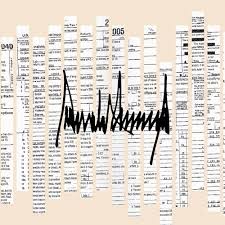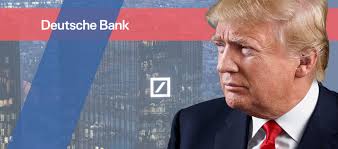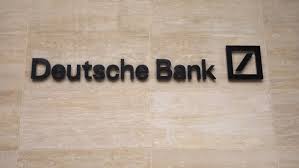While Navigating Middle Ground, Supreme Court Upholds Congressional Subpoena for President Trump’s Financial Records (Part II of II)

In a companion case to Trump v. Vance, which I discussed in Part I, the Supreme Court, in Trump v. Mazars, rejected Trump and DOJ’s challenges to enforcement of congressional subpoenas for Trump’s financial records. Again, Chief Justice Roberts, writing for the Court, in a 7-2 vote, upheld the subpoenas but ordered the lower court to apply a comprehensive four-part test to the proposed subpoenas.
Chief Justice Roberts clearly was seeking a middle ground in resolving the dispute with Congress. Interestingly, the four justices who joined the opinion, Ginsburg, Breyer, Sotomayor, and Kagan, may have supported the idle course fearing a Republican congress’ desire to subpoena personal papers from a Democrat President.
Chief Justice Roberts and the other justices displayed sensitivity to the unique situation involving separation of powers and a dispute between two branches.
In April 2019, three House committees issued four subpoenas seeking information about Trump, his family and affiliated organizations. The House Finance Committee issued a subpoena to Deutsche Bank seeking any document related to account activity, due diligence, foreign transactions, business statements, debt schedules, statements of net worth, tax returns, and suspicious activity identified by Deutsche Bank. It issued a second subpoena to Capital One for similar information.

The House Intelligence Committee issued a subpoena to Deutsche Bank that mirrored the subpoena issued by the Financial Services Committee. And the House Oversight Committee issued a subpoena to the President’s personal accounting firm, Mazars USA, LLP, seeking financial information related to President Trump. Trump and his family opposed the subpoena, claiming that the subpoenas lacked a legitimate legislative purpose.
In reviewing the decisions of the lower courts, Chief Justice Roberts, writing for the majority, ruled that the lower courts did not take adequate account of the significant separation of powers concerns implicated by congressional subpoenas. In the past, these concerns are usually resolved between the political branches through negotiation and compromise. The Supreme Court has never had to resolve such disputes in the past.

As noted, Chief Justice Roberts noted that such longstanding practice “‘is a consideration of great weight’ ” in cases concerning “the allocation of power between [the] two elected branches of Government,” and it imposes on the Court a duty of care to ensure that it does not needlessly disturb “the compromises and working arrangements” reached by those branches.
The Supreme Court noted that Congress has the need “to secure needed information” in order to legislate. Such a power is indispensable to Congress’ ability to legislate “wisely or effectively.”
Notably, the Court observed that this power to secure information is “justified solely as an adjunct to the legislative process,” it is subject to limitations. In this regard, the subpoena has to be “related to, and in furtherance of, a legitimate task of the Congress.” In other words, the subpoena must serve a “valid legislative purpose.”

Congress cannot issue subpoenas with a “law enforcement” purpose because that power rests exclusively in the Executive and Judicial Branches. Recipients of congressional subpoenas retain their constitutional rights and privileges.
Trump and DOJ claimed that congressional subpoenas for the President’s information should be evaluated under the standards set forth in United States v. Nixon, 418 U. S. 683, which would require the House to show that the requested information satisfies a “demonstrated, specific need,” and is “demonstrably critical” to a legislative purpose.”
Chief Justice Roberts distinguished this situation by noting that past cases involved subpoenas for communications between the President and his close advisers, over which the President asserted executive privilege. In this case, Congress was not seeking access to materials protected by any claim of Executive Privilege.
The House’s position ignored the significant separation of powers issues raised by congressional subpoenas, and would essentially place no limits on the congressional power to subpoena the President’s personal records. Chief Justice Roberts embraced the middle ground out of concern that Congress could aggrandize itself at the President’s expense.
Chief Justice Roberts ruled that neither side has taken into account these weighty separation of powers concerns, and that a balanced approach is necessary. In this regard, in assessing whether a subpoena directed at the President’s personal information is “related to, and in furtherance of, a legitimate task of the Congress,” Watkins, 354 U. S., at 187, Chief Justice Roberts explained that courts must take adequate account of the separation of powers principles at stake by employing a four-part test:
First, courts should carefully assess whether the asserted legislative purpose warrants the significant step of involving the President and his papers. “‘[O]ccasion[s] for constitutional confrontation between the two branches’ should be avoided whenever possible.” Cheney v. United States Dist. Court for D. C., 542 U. S. 367, 389–390 (quoting Nixon, 418 U. S., at 692). Congress may not rely on the President’s information if other sources could reasonably provide Congress the information it needs in light of its particular legislative objective.
Second, to narrow the scope of possible conflict between the branches, courts should insist on a subpoena no broader than reasonably necessary to support Congress’s legislative objective.
Third, courts should be attentive to the nature of the evidence offered by Congress to establish that a subpoena advances a valid legislative purpose. The more detailed and substantial, the better. That is particularly true when Congress contemplates legislation that raises sensitive constitutional issues, such as legislation concerning the Presidency.

Fourth, courts should assess the burdens imposed on the President by a subpoena, particularly because they stem from a rival political branch that has an ongoing relationship with the President and incentives to use subpoenas for institutional advantage.
The Supreme Court remanded the case to the U.S. Courts of Appeals for the D.C. Circuit and the Second Circuit for further proceedings.
The majority closes its opinion with an important statement that “it ‘unquestionably’ remains ‘the duty of all citizens to cooperate” with Congress when the legislature “seeks information ‘needed for intelligent legislative action.’”














